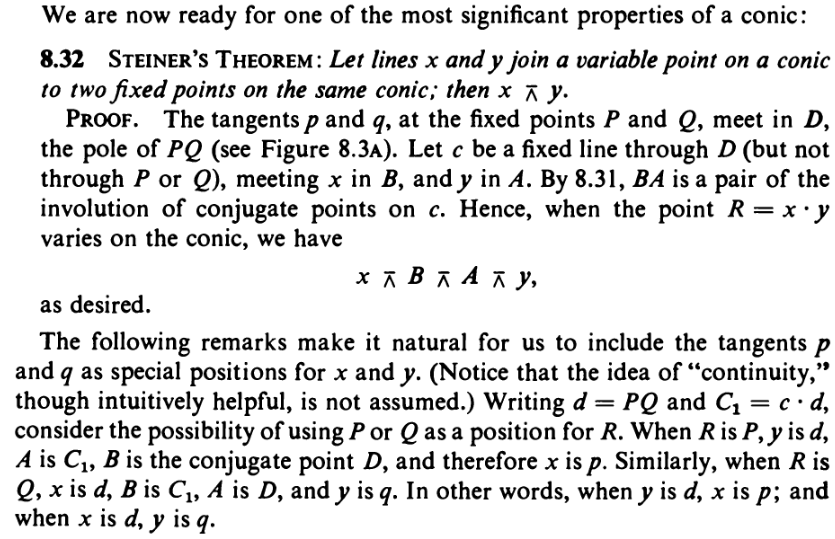|
|
original poster
hbghlyj
posted 2023-4-27 03:26
Steiner conic
MathWorld
Another theorem due to Steiner lets lines $x$ and $y$ join a variable point on a conic section to two fixed points on the same conic section. Then $x$ and $y$ are projectively related.

| Harold Scott Macdonald Coxeter, Projective geometry, Springer (2003)
8.32 |
Construct tangents $p$ and $q$, at the fixed points $P$ and $Q$, meet in $D$, the pole of $PQ$ as in Figure 8.3 A.
Let $c$ be a fixed line through $D$ (but not through $P$ or $Q$), meeting $x$ in $B$, and $y$ in $A$. By 8.31 (SEYDEWITZ'S THEOREM), $BA$ is a pair of the involution of conjugate points on $c$. Hence, when the point $R=x\cdot y$ varies on the conic, we have $x$ projective to $B$, $B$ projective to $A$, and $A$ projective $y$, as desired.

|
|